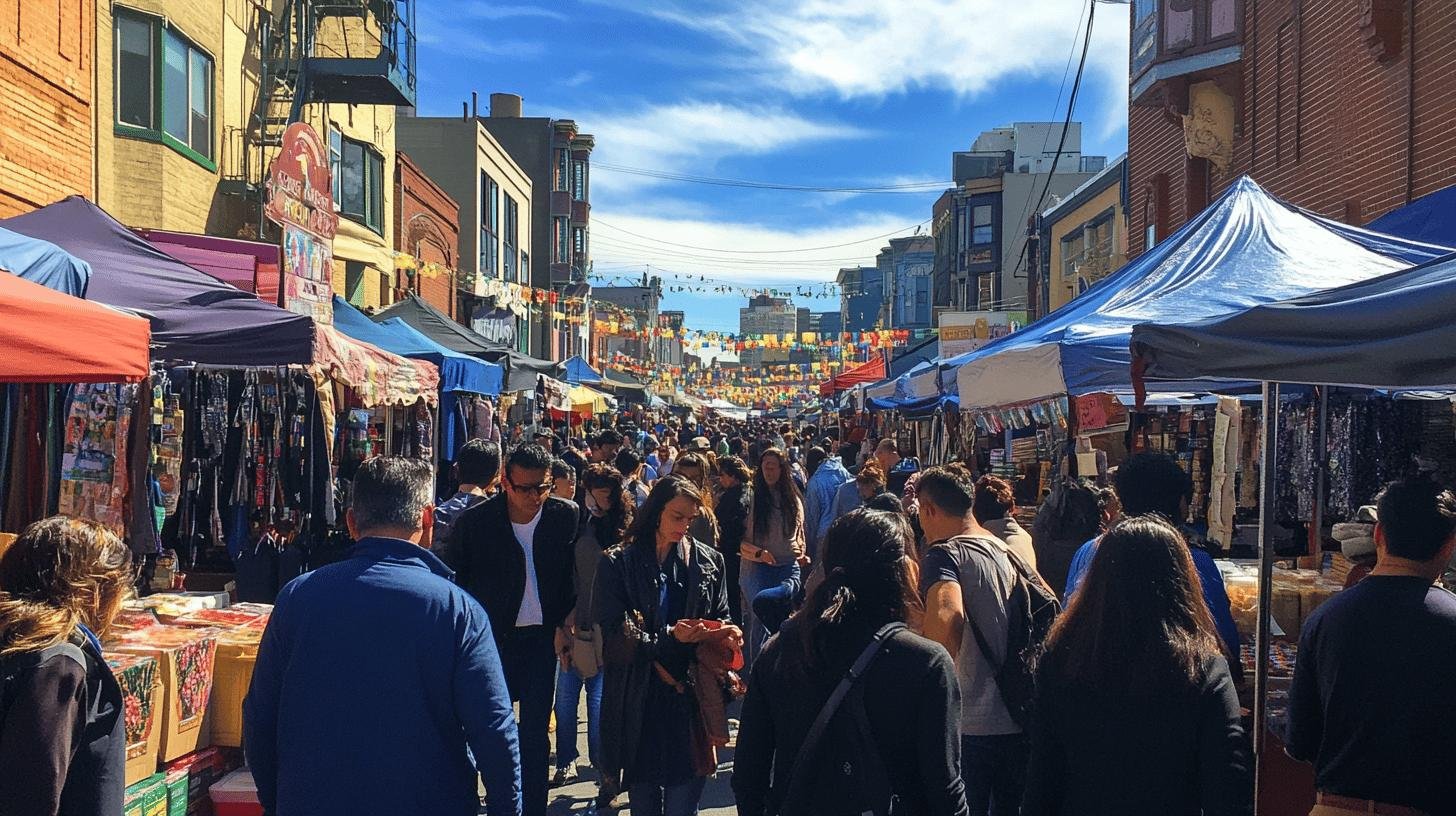TL;DR:
- Laissez-faire economics advocates minimal government intervention, allowing markets to self-regulate through supply and demand.
- Originated in 18th-century France, it emphasizes free competition, private property, self-interest, and limited government.
- It is a form of capitalism, distinguished by a hands-off approach.
- Key historical examples include the Industrial Revolution in the U.S. and Great Britain.
- Criticisms include potential inequality and market failures due to lack of regulation.
- Government roles in laissez-faire are minimal, primarily focusing on addressing market failures and enforcing contracts.
- Regulated capitalism differs by incorporating government intervention to address inequalities and provide public goods.
Is laissez-faire economics simply capitalism without rules? This age-old question stirs debate among economists and everyday folks alike. At its core, laissez-faire stands for “let it be,” insisting that free markets work best with minimal government meddling. But is that all there is to this hands-off economic philosophy?
This article dives into laissez-faire’s principles, contrasts it with broader capitalism, and examines its historical roots. Whether you’re a supporter or critic, understanding these concepts could change how you see the role of government in our wallets.
Understanding Laissez-Faire Economics
Laissez-faire economics is a philosophy advocating for minimal government interference in economic activities. The idea is to let markets self-regulate, with supply and demand balancing naturally. This term originates from 18th-century France, meaning “let do” or “let it be,” reflecting its non-intervention approach. It believes that economies flourish best when left free from government meddling.
- Free competition: Encourages businesses to innovate through competition.
- Private property: Maintains individual ownership rights.
- Self-interest: Drives individuals to pursue economic gain.
- Supply and demand: Naturally adjusts prices and production.
- Limited government: Keeps the state’s role minimal.
Laissez-faire economics emphasizes personal freedom and free trade. By minimizing governmental roles, individuals gain more control over economic decisions, fostering trade without barriers. The philosophy trusts that self-interested actions lead to a healthy, competitive market. The belief is that a hands-off approach results in efficient and prosperous societies.
Laissez-Faire Economics vs. Capitalism

Is laissez-faire economics a form of capitalism? Yes, it is. Capitalism is a broad system where individuals own property and businesses, aiming for profit, driven by supply, demand, and competition. Capitalism allows varying levels of government involvement for economic and social needs. Thus, while all laissez-faire systems are capitalist, not all capitalist systems are laissez-faire.
Laissez-faire stretches capitalism by advocating for minimal government role in economics. It favors a hands-off approach, letting market forces dictate outcomes. By reducing government roles, laissez-faire trusts competition and free trade to self-regulate the market. It argues that economic growth and efficiency flourish without state intervention, contrasting with regulated capitalism that integrates some government oversight.
Misconceptions occur when people conflate all capitalism with laissez-faire. While both prioritize free markets and private ownership, regulated capitalism includes government roles to address inequality and market failures. Laissez-faire limits these roles, focusing on the market’s natural order. Clarifying this difference helps understand why not all capitalist economies are laissez-faire.
| Aspect | Laissez-Faire | Regulated Capitalism |
|---|---|---|
| Government Role | Minimal | Varied |
| Market Regulation | Self-regulating | Government oversight |
| Economic Freedom | Maximized | Balanced |
| Social Policies | Limited | Integrated |
| Income Distribution | Uncontrolled | Managed |
Historical Context and Examples of Laissez-Faire
Laissez-faire economics arose in the 18th century as a reaction to government-heavy mercantilism. It advocated for minimal state interference, allowing the market to self-regulate. In the 19th century, these ideas gained traction, especially during the Industrial Revolution. This era saw significant technological advances and increased production, driven by beliefs that free markets could enable rapid growth without bureaucratic constraints.
- Industrial Revolution: Laissez-faire fueled technological and industrial advancements.
- United States (late 19th century): Minimal regulations allowed industries to expand rapidly.
- Great Britain (19th century): Adopted laissez-faire to boost economic growth and trade.
Laissez-faire policies deeply impacted economic growth during these times. In the U.S., less regulation enabled industry growth, contributing to its rise as an economic power. Similarly, in Great Britain, laissez-faire promoted trade and industrial expansion, reinforcing global dominance. Yet, critics argue it also led to inequalities and worker exploitation, revealing the complexities of laissez-faire economics.
Criticisms and Challenges of Laissez-Faire

Does laissez-faire economics create inequalities? Critics argue it does by allowing unequal wealth distribution through reduced government intervention. Larger businesses may dominate markets, squeezing out smaller competitors and fostering monopolies. This concentration of power leads to income and opportunity disparities, challenging the principle of equal economic footing.
Can laissez-faire lead to market failures? Yes, it can. With little regulation, the system might not address inefficiencies. Essential services or public goods like healthcare may be underprovided due to profit motives. Without consumer protections, individuals may face exploitation, causing market failures. These challenges question laissez-faire’s viability as a holistic economic model.
The Role of Government in Laissez-Faire and Capitalist Economies
What is the government’s role in laissez-faire? Minimal. Laissez-faire calls for limited government involvement, trusting market forces for order. The philosophy holds that less government interference allows markets to self-regulate through supply and demand. By stepping back, governments enable businesses and individuals to engage freely, aiming for efficiency and innovation.
- Addressing market failures: Governments intervene to correct inefficiencies.
- Providing public goods: Ensures resources like roads and schools are accessible.
- Regulating monopolies: Prevents market domination by single entities.
- Enforcing contracts: Upholds legal agreements.
How do government roles differ in regulated capitalism compared to laissez-faire? In regulated capitalism, government roles are marked. Laissez-faire leans on natural market equilibrium, whereas regulated capitalism acknowledges intervention for inequalities and public services. This approach finds a balance between free-market principles and societal needs, contrasting with the minimal government of laissez-faire.
Final Words
Evaluating laissez-faire economics, we unpacked its essence: minimal government meddling. This philosophy stands apart as a hands-off capitalism type, promoting free competition and individualism. Historical examples, like the Industrial Revolution, highlighted its impact, fueling rapid growth but also sparking criticism.
Laissez-faire has its perks—boosting innovation and growth—but also stirs debates over income gaps and monopolies. Understanding these nuances helps clarify how laissez-faire economics intertwines with broader capitalism concepts. Recognizing the balance between market freedom and necessary regulation offers insight into ideal economic systems.
FAQ
What economic system is laissez-faire?
Laissez-faire is an economic system where the government minimizes its role in economic activities. It relies on markets to self-regulate, promoting individualism and free trade, typical in certain types of capitalism.
What is capitalism in economics?
Capitalism is an economic system that allows private ownership of resources and businesses. It operates on supply and demand with varying levels of government regulation for stability and fairness.
What is laissez-faire in simple terms?
Laissez-faire means “let do” in French, signifying a hands-off government approach. It promotes free trade, encouraging markets to operate with minimal restrictions for better economic efficiency.
Who introduced the concept of laissez-faire?
The concept of laissez-faire originated in 18th-century France. It gained prominence through thinkers like Adam Smith, who advocated for minimal government interference in markets.
What economic theories relate to Adam Smith?
Adam Smith’s theories revolve around the “invisible hand” guiding markets. His support for laissez-faire highlights limited government involvement and free market principles.
How is laissez-faire different from socialism?
Laissez-faire relies on market self-regulation with minimal government. Socialism, in contrast, emphasizes government control and distribution of resources to ensure equality across society.
How does laissez-faire leadership work?
Laissez-faire leadership involves giving team members freedom to work how they choose. Leaders provide minimal guidance, fostering autonomy but requiring high trust and self-motivation.

